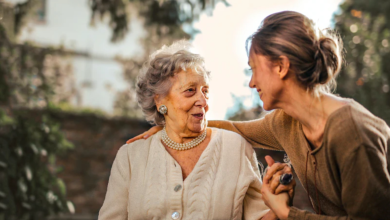Engaging Activities for Seniors with Limited Mobility: A Selection of Eight

Understanding Mobility Challenges in Older Adults
As individuals age, it’s common to encounter difficulties with mobility. Factors such as decreased flexibility and elasticity in the body, along with conditions like stroke or arthritis, can impede movement. However, it’s essential to recognize that aging doesn’t necessarily equate to severe mobility issues.
Common Causes of Mobility Limitations
While aging is a contributing factor, several conditions frequently affect the mobility of older adults:
- Osteoporosis: Weakens bones, increasing the risk of fractures and restricting movement.
- Cardiovascular Diseases: Heart-related conditions may limit mobility for safety or health concerns.
- Obesity: Excessive weight can strain joints, making physical activity challenging.
- Parkinson’s Disease: Affects movement and coordination.
- Arthritis: Causes joint pain and restricts mobility.
- Sensory Impairments: Diminished hearing or vision can impact movement safety.
The Importance of Activities for Seniors with Limited Mobility
Participating in activities is vital for seniors facing mobility constraints because:
- Physical and Mental Health: Engaging in activities keeps the body and mind active, aiding in managing cognitive decline.
- Emotional Well-being: Enjoyable activities reduce stress, enhance mood, and contribute to overall health and memory.
- Purpose and Satisfaction: Remaining active combats feelings of inadequacy or depression, fostering a sense of accomplishment.
Eight Engaging Activities for Seniors with Limited Mobility
Despite mobility challenges, older adults can still enjoy various activities:
- Playing Games: Board games, card games, puzzles, and digital games promote mental stimulation and social interaction.
- Outdoor Time: Simple outdoor activities like bird watching or light exercises provide opportunities to enjoy nature.
- Creative Pursuits: Arts and crafts activities such as painting, writing, music, and scrapbooking foster creativity and mental engagement.
- Educational Activities: Taking classes in cooking, languages, or music, whether in person or online, offers opportunities for continuous learning.
- Social Engagement: Joining clubs, groups, or participating in social activities helps maintain connections and boosts mental well-being.
- Family Activities: Sharing stories, exploring genealogy, or browsing through photo albums strengthens family bonds.
- Gentle Exercises: Chair yoga, water aerobics, or tai chi are suitable for maintaining physical health and mobility.
- Volunteering: Engaging in community service activities, such as assisting at charity events or soup kitchens, provides a sense of purpose and fulfillment.
Finding Suitable Activities
Resources for discovering activities include religious groups, community centers, senior homes, and charitable organizations.
Frequently Asked Questions
- Exercises for Non-walkers: Chair exercises like yoga, arm raises, and seated torso twists offer benefits.
- Home Exercises for Seniors: Stretching, squats, wall push-ups, and indoor walking are effective options.
- Keeping Seniors Mentally Active: Games, artistic endeavors, musical activities, and learning new skills are excellent for mental agility.




